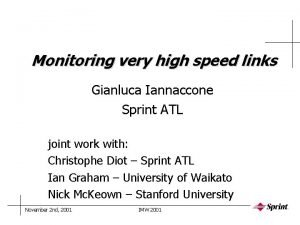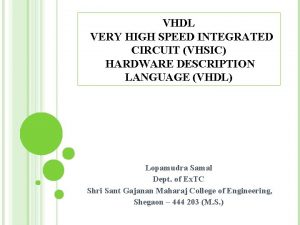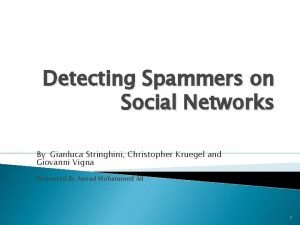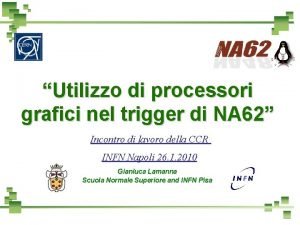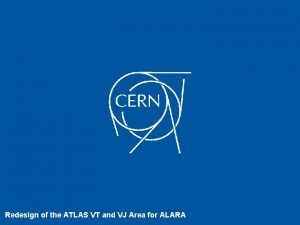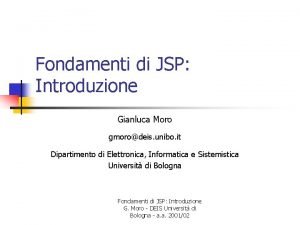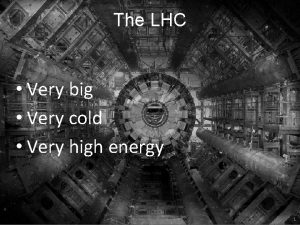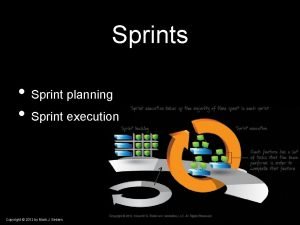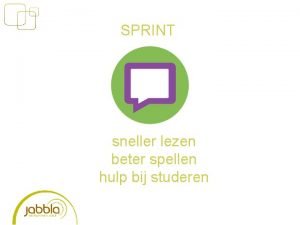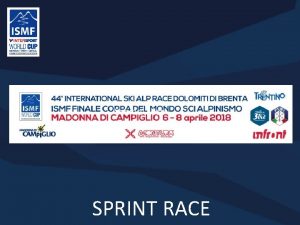Monitoring very high speed links Gianluca Iannaccone Sprint
















- Slides: 16

Monitoring very high speed links Gianluca Iannaccone Sprint ATL joint work with: Christophe Diot – Sprint ATL Ian Graham – University of Waikato Nick Mc. Keown – Stanford University November 2 nd, 2001 IMW 2001

Packet-level trace collection: the DAG example • Optical splitter to divert part of the signal toward the capture card. • The capture card stores a record with a timestamp for each packet. • The card uses the PCI bus to transfer the records to the host main memory. • It is used by the Sprint IP Monitoring Project. 2 November 2 nd, 2001 IMW 2001

Challenges for next generation capture devices • PCI bus throughput: – PCI 66 Mhz/64 bit is already challenged at OC-48 speed. • Storage capacity and data management: – Several terabytes per trace collection. • Memory access speed. • Disk array speed: – OC-192 would require roughly 250 Mbytes/sec (64 byte records, 300 byte average packet size). 3 November 2 nd, 2001 IMW 2001

Challenges for next generation capture devices (cont’d) • Deployment of extensive monitoring facilities inside the routers: – Backplane speeds are in the order of hundreds of Gbps; – Stringent power and space constraints; – Switched backplanes reduce the advantage of being inside the router. 4 November 2 nd, 2001 IMW 2001

Our Goals • Be capable of collecting packet at OC-192 speed with the current PCI technology. • Develop a 4: 1 compression technique. • Minimize the loss of information due to compression. 5 November 2 nd, 2001 IMW 2001

System requirements • Online processing required for compression. • At OC-192 speed (10 Gbps), a new packet arrives every 240 ns (300 -byte packets). – We can assume large average packet sizes because we can buffer incoming packets (once timestamped). 6 November 2 nd, 2001 IMW 2001

From packet traces to flow traces • Store information at the flow-level: – a flow is defined by the usual 5 -tuple. • Flow information are shared among all the packets belonging to the same flow. • Store few information per packet: – packet arrival time; – size; – sequence numbers –… 7 November 2 nd, 2001 IMW 2001

Flow and packet records TCP: 28 bytes/flow; 16 bytes/pkt; UDP: 20 bytes/flow; 12 bytes/pkt; Other: 16 bytes/flow; 12 bytes/pkt; 8 November 2 nd, 2001 IMW 2001

Flow termination • Records of terminated flows are dumped to the host memory (and then to disk). • Flow termination relies on a timeout: – A short timeout will require less memory; – A long timeout will give better compression rates; – Anyway, the timeout does not affect the accuracy of the system because we can postprocess the trace; 9 November 2 nd, 2001 IMW 2001

Flow fragmentation • Long-lived flows can be a problem: – Large records and high bursts of traffic on the PCI bus; • We set a limit to memory occupancy for a flow record (with relative packet records): – If the memory limit is exceeded, the Record Number is increased and the record is stored. – When the flow terminates the entire record is stored to disk with the Last Record flag set. 10 November 2 nd, 2001 IMW 2001

Memory required 11 November 2 nd, 2001 IMW 2001

Preliminary performance study • We have built a simple emulator to compress a packet-level trace. • 5 different traces with different link utilizations and traffic patterns. • Compression rates ranging between 3. 20 and 4. 02 (compared to DAG 3 packet traces). 12 November 2 nd, 2001 IMW 2001

Hardware architecture • Steps required in trace collection: – process framing information; – timestamp the packet; – classify the packet; – update flow/packet record; – store terminated flows to disk (background); • All these steps can be pipelined: – Each step can be performed during the interval between two packet arrivals. 13 November 2 nd, 2001 IMW 2001

Packet classification • May be very expensive in terms of computation time and resources: – One-to-one mapping between packets and flows. • But a simple hash function may be enough: – Requires a large amount of fast memory; – Collisions can be solved using a second hash function or a lookup trie. 14 November 2 nd, 2001 IMW 2001

Conclusion • New compression techniques are necessary to monitor OC-192/OC-768 links. • We have proposed a novel scheme for flowbased trace collection. • We have shown how to achieve compression ratio of 4: 1 without losing much information. 15 November 2 nd, 2001 IMW 2001

Open issues and future work • • • 16 Detailed cost analysis (chipsets, memory). Packet classification performance. Second stage of record compression. Techniques to cope with traffic anomalies. Sampling techniques. November 2 nd, 2001 IMW 2001
 Gianluca iannaccone
Gianluca iannaccone Vhsic
Vhsic Coping with emotions while driving includes
Coping with emotions while driving includes The glen moodle
The glen moodle Very bad to very good scale
Very bad to very good scale Used to express very large or very small numbers
Used to express very large or very small numbers Fewfew
Fewfew Is a very shallow skillet with very short sloping sides
Is a very shallow skillet with very short sloping sides Very little food
Very little food A very light ping pong ball moving east at a speed
A very light ping pong ball moving east at a speed Gianluca stringhini
Gianluca stringhini Gianluca attura
Gianluca attura Gianluca lamanna
Gianluca lamanna Gianluca verona rinati
Gianluca verona rinati Gianluca camplone
Gianluca camplone Gianluca cavoto
Gianluca cavoto Gianluca moro unibo
Gianluca moro unibo
